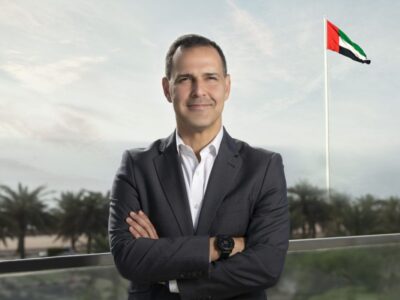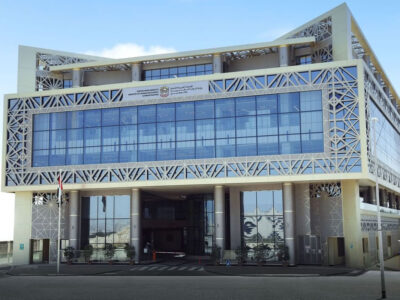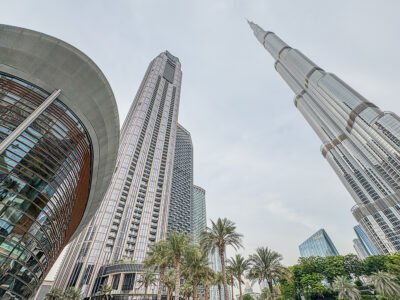UAE jobseekers are advised to refrain from sharing their photographs on their Curriculum Vitae (CV), while applying for jobs, experts said, adding that this could invite unconscious bias and discrimination.
“Personally, I think CVs look more professional without a photograph. It can be challenging to choose an appropriate photo, and it often depends on the subjective opinion of the CV reviewer. In my experience, it’s best to focus on the content of the CV and let one’s qualifications speak for themselves,” Dubai-based career coach Noona Nafousi told Arabian Business.
Read More on the Topic:
- How to get a job in Dubai: 8 simple steps to secure a high-paying role
- How to land your dream job in 7 steps
- Top 5 tips to discuss salary without making it awkward
- Revealed: Most in-demand jobs in the UAE
The practice of jobseekers adding their photos to CVs began to gain popularity in the early 2000s, with the rise of online job applications and social media.
This trend was further fuelled by the increasing use of Applicant Tracking Systems (ATS), which are software programs that scan CVs for keywords and match them to job openings.
There are several reasons why jobseekers might choose to include a photo on their CV. A photo can help to make a CV more visually appealing and can also give potential employers a better sense of the jobseeker’s personality and professionalism.
Additionally, some studies have shown that including a photo can increase a jobseeker’s chances of getting an interview.
Nafousi explained that while there are many benefits of including a photograph in a CV, this could also call for the “risk of bias, either positive or negative, based on appearance,” she said.
“A photo might also distract from the substantive qualifications on the CV,” Nafousi added.

Echoing the sentiment, TishTash’s Director of People and Culture April Kearns told Arabian Business that she personally “discourages the use of photographs on a CV,” adding that “from a diversity and inclusion perspective, it is much easier to avoid subconscious biases without any photographs on a CV and let the experience speak for itself.”
Does including a photograph add value to a job application?
According to both Nafousi and Kearns, including a photograph may provide value for applications in certain industries where appearance and presentation are particularly important, such as hospitality, customer-facing roles (such as real estate, sales, aviation), media and entertainment, and public relations.
“In Dubai, including a photograph on a CV is quite common, especially for roles involving client interaction. The more senior the role however the less it is required,” Nafousi said.
A well-curated professional headshot could help an applicant’s CV stand out from others by highlighting their presentation skills and personality. However, it is critical to research whether including photos is the norm within the specific company or industry.
Photographs should only be added if they are explicitly supported by and aligned with usual hiring practices within that context. Introducing visual elements where they are not expected could potentially distract from or disadvantage other aspects of the application, she explained.
In Dubai, Kearns said, there is a “broad perception that Dubai is all about image – it is one of the most glamorous and wealthy places in the world – so from this perspective, I am sure there are employers who welcome CVs with photographs.

“However, as our labour laws have become more progressive in terms of equal opportunities and the race to find good talent is hot as ever, it is key to focus on the experience and potential of the candidate regardless of the photograph/ lack of on the CV.”
Kearns is right. According to Article (4) of the labour law, the UAE recognises all employees, regardless of their gender, race, colour, nationality, religion, social origin or disability, shall have equal opportunities for employment and shall be treated equally in all aspects of employment, including recruitment, selection, promotion, training, remuneration, working conditions and termination of employment.
So, how can jobseekers stand out with a CV without a photograph?
“Jobseekers can differentiate themselves by highlighting specific achievements, providing quantifiable results, tailoring their CV to the job, and including a unique personal statement,” Nafousi said, adding that “good, clear design and impeccable grammar can also make a CV stand out.”
Nafousi also recommends candidates to tailor each CV to the specific job description and review what the employer is looking for in the listing.
“If a photo is to be included, it should be a professional headshot. The photo should be recent, high-quality, with a neutral background, and the candidate should wear professional attire that matches the industry standard. Make sure you are smiling! Goes a long way,” she added.

In addition, when asked if a jobseeker’s UAE visa status is important in a CV, Kearns said that “as it is a legal requirement for employers to provide an employment visa/work permit it is useful information for the employer to know the candidates visa status.”
She also said adding the following details would also be essential to a recruiter while viewing the jobseeker’s CV:
- Correct dates attached to your existing and previous job roles
- Your location (IE – Emirate and Country)
- Correct contact information
- Details of your degree and education qualifications can be useful
- Languages spoken
- A short summary of your experience at the top of your CV – don’t be afraid to use bullet points.








